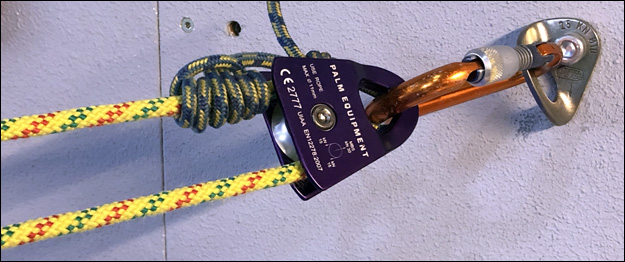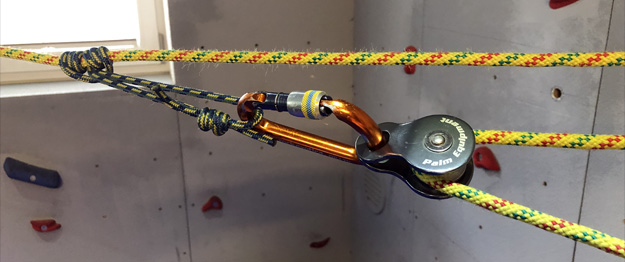
Thought on Karabiners and Pulleys for Whitewater Rescue
On a rescue course students often spend a lot of time talking about their bling; that is to say karabiners and pulleys. How many, what type and where they keep it.
As I teach rescue systems on both raft guide, whitewater and swiftwater rescue courses I have found a lot of items that work well and quite a lot that don’t.
Karabiners
The Karabiner part is easy: screw gate locking, pear shape (HMS) aluminium karabiners with a key lock nose system, are the best to have. End of argument. This type of karabiner will do any job required well enough and are easy to use in the river environment.
Now people who work at height love their 3 way locking Krabs, rescue teams love their steel Krabs and kayakers their “paddle” Krabs, but they all have critical drawbacks in some water rescue situations and so I have stopped using them for swiftwater rescue.
Pulleys
I consider a good pulley to be strong, lightweight, compact, efficient and well designed, as well as being affordable.
When I started whitewater kayaking in the 1990’s a very small and light weight pulley was considered the best to have. It was definitively affordable, with small plastic wheels and thin aluminium side plates. They were unfortunately not overly strong, efficient or well designed. These can still be found online for under €10 in kayak shops. I do not recommend them.
The only other option at that time were large rescue pulleys. These were very strong & efficient, but not compact, lightweight or designed to be used with thin ropes. OK to be carried in rafts but not really suitable as personal rescue equipment. For this reason a lot of experts started to look at ways to get around having to use pulleys at all. Methods like the vector pull or external sling MA systems that could avoid needing pulleys, gained a lot of favour with experts, and are still taught to this day.
At the turn of the century I got hold of a pulley that changed my life. The Petzl mini PMP pulley. This was made for Petzl by Rock Exotica in the USA, and was strong, lightweight, compact, efficient and well designed.
A PMP pulley is simple design that allows the brake prussic to be pushed along the rope without someone needing to help it. This frees up another person to help with the rescue, which in small groups is definitely a huge advantage.
The only downside for this pulley was the price, which has continued to be the main problem with acceptance. Why spend so much money on something you hope never to have to use?
Options in 2020
A few years ago some companies started making small all metal pulleys. These are strong, lightweight, compact, efficient and affordable. Which meant that both paddlers and rescue teams could carry a pulley as part of their personal rescue equipment. Pulleys started to come back in fashion.
 Image: Pulleys that are moving in the system do not need to be prussic minding. Here the Palm whitewater pulley.
Image: Pulleys that are moving in the system do not need to be prussic minding. Here the Palm whitewater pulley.
Some well made examples found in your local kayak shop are from Palm (whitewater Pulley RRP € 20.95) or in your local climbing shop from Edelrid (Turn Pulley RRP € 19.99). However they are not designed to be prussic minding, which is still a design flaw in my mind, if you want to use your pulley for progress capture in a MA system.
Rock Exotica still make an updated CNC’d version of their Mini in the USA which retails here in Europe for € 68. It is beautiful, but expensive. Petzl now make their own version of the Mini in Malaysia, which has come down in price, but still retails for €45.
New for 2020 Palm equipment are selling their version of a mini PMP for only €35. It looks like I may of finally found a pulley that is strong, lightweight, compact, efficient and well designed, as well as being affordable for most paddlers.
Blog post by Neil Newton Taylor Rescue 3 International Instructor Trainer & International Rafting Federation Assessor